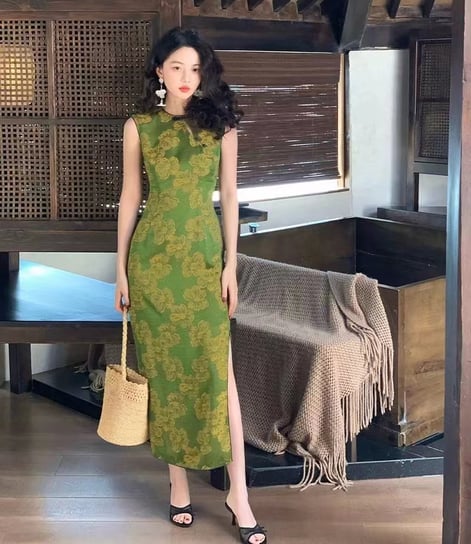What Is Qipao: The Timeless Elegance of Chinese Dress
The qipao is a symbol of Chinese clothing. It originated from the Manchus in the Qing Dynasty and was modified by Shanghai tailors during the Republic of China to become the modern qipao.
QIPAO KNOWLEDGE
5/29/20252 min read


Origins and Historical Evolution
The roots of the qipao can be traced back to the Manchu ethnic minority during the Qing Dynasty (1644–1912). Originally called the "changpao" (long gown), it was a loose-fitting garment worn by both men and women, designed for practicality in daily life and horse-riding. After the fall of the Qing Dynasty, the republican era (early 20th century) brought significant changes. Influenced by Western fashion, Shanghai tailors began to refine the qipao: they slimmed its silhouette, shortened its length, and added modern elements like mandarin collars, side slits, and intricate embroidery. This marked the birth of the modern qipao, a symbol of female elegance and progressive style in urban China.
Design Features and Cultural Symbolism
The qipao’s allure lies in its harmonious blend of simplicity and sophistication:
Silhouette:
Typically form-fitting, it accentuates the wearer’s figure while maintaining an air of modesty.
The straight cut from shoulder to hem, combined with side slits (usually reaching the knee or higher), adds mobility and a subtle touch of allure.
Collars and Embellishments:
The mandarin collar , often high and closed, symbolizes dignity and tradition. It can be plain or adorned with decorative buttons (frog closures).
Embroidered patterns, such as dragons, phoenixes, flowers, or auspicious motifs, reflect Chinese artistry and carry cultural meanings—for example, peonies symbolize wealth, while cranes represent longevity.
Fabrics:
Traditional qipao are crafted from luxurious materials like silk, brocade, or satin, often featuring intricate handiwork. Modern versions may use cotton, linen, or synthetic blends for everyday wear.
The qipao also embodies gender and social shifts. In the 1920s and 1930s, it became a symbol of female emancipation in China, worn by educated women and celebrities alike. Its popularity transcended class, reflecting a new era of modernity and cosmopolitanism in cities like Shanghai.
Qipao in Modern Culture
Today, the qipao remains a celebrated garment with global appeal:
Fashion Runways: Designers like Guo Pei and Vivienne Tam have reinterpreted the qipao, blending it with contemporary styles. Elements like asymmetrical cuts, bold prints, or minimalist silhouettes showcase its adaptability.
Ceremonial Occasions: It is a staple at weddings, festivals, and international events. For example, Chinese diplomats’ spouses often wear qipao at state functions, highlighting its role as a cultural ambassador.
Cinematic Legacy: Iconic films like In the Mood for Love (2000), in which Maggie Cheung wears a series of sumptuous qipao, have immortalized the dress as a symbol of mystery and elegance in global pop culture.
Preservation and Cultural Significance
While the qipao has evolved with the times, it remains a vital part of China’s intangible cultural heritage. Craftsmanship techniques, such as hand-stitching and traditional dyeing, are preserved by artisans dedicated to maintaining its authenticity. The dress also serves as a bridge between past and present, reminding us of China’s rich sartorial history and its ability to embrace change while honoring tradition.
The qipao is more than just a dress—it is a living narrative of China’s history, a fusion of Eastern and Western aesthetics, and a testament to the enduring power of fashion as cultural expression. Whether worn in a bustling modern city or at a traditional ceremony, it continues to captivate the world with its timeless beauty and grace. As a symbol of both heritage and innovation, the qipao stands as a proud emblem of Chinese identity in the globalized era.
The qipao, also known as the cheongsam, is a iconic Chinese garment that embodies grace, history, and cultural fusion. This form-fitting dress has evolved over centuries, reflecting the dynamic spirit of China while retaining its unique aesthetic charm.


